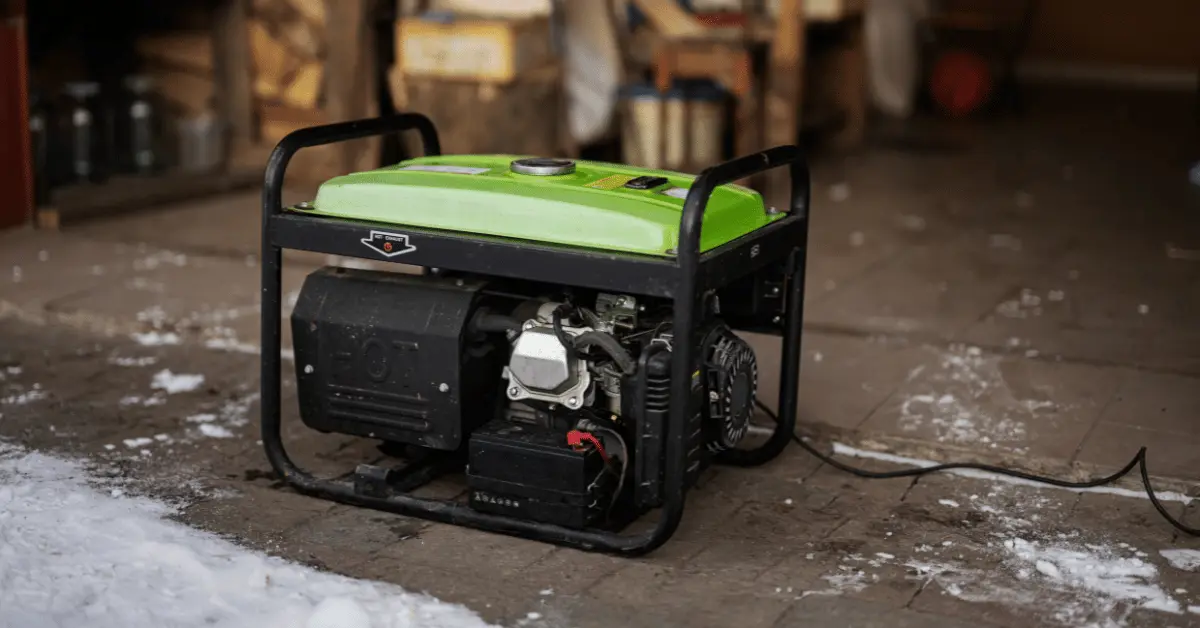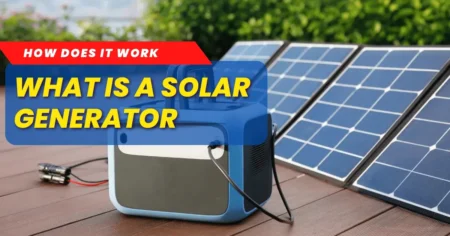Running a generator in a garage can be risky, but you can do it safely if you follow critical rules. This guide will help you understand how to use a generator in a garage without putting yourself at risk.
Why Running A Generator In A Garage Can Be Dangerous
Generators produce carbon monoxide (CO), a colorless and odorless gas. This gas can build up in a closed space and cause serious health problems or even death. That’s why running a generator in a closed garage is dangerous.
Important Safety Tips
Here are some essential safety tips to keep in mind:
- Never Run a Generator in a Closed Garage: Always keep the garage door open. This helps the gas escape and keeps you safe.
- Use a Carbon Monoxide Detector: Install a carbon monoxide detector in your garage and home. It will alert you if CO levels get too high.
- Ensure Proper Ventilation: Make sure your garage is well-ventilated. Open doors and windows, and use fans if needed.
- Keep Flammable Items Away: Store flammable materials like gasoline and paint far from the Generator. They can catch fire if they get too close.
- Follow the Manufacturer’s Instructions: Read the Generator’s manual and follow all safety guidelines provided.
Steps To Safely Run A Generator In A Garage

Follow these steps to use your Generator safely:
Step 1: Choose The Right Spot
Place the Generator near the open garage door, at least 15 feet from the house. This helps direct exhaust fumes outside.
Step 2: Open The Garage Door
Always keep the garage door open while the Generator is running. This allows fresh air in and helps fumes escape.
Step 3: Use a Carbon Monoxide Detector
Place a carbon monoxide detector in both the garage and inside your home. It will warn you if CO levels become unsafe.
Step 4: Ensure Proper Ventilation
Open all windows and doors in the garage to let air flow through. Fans can also help move the air and reduce CO levels.
Step 5: Keep Flammable Items Away
Keep things like gasoline and paint far from the Generator. This prevents fires in case of sparks or heat.
Step 6: Follow Manufacturer’s Instructions
Always read and follow the Generator’s manual. The instructions are there to keep you safe.
Maintenance Tips
Regular maintenance keeps your Generator running safely:
- Check the Oil Level: Check the oil before starting the Generator. Low oil can damage the engine. Add oil if needed.
- Clean the Air Filter: A clean air filter helps the Generator run smoothly. Check it often and clean or replace it if it’s dirty.
- Inspect the Spark Plug: Make sure the spark plug is clean and in good condition. Replace it if it’s worn out.
- Store the Generator Properly: When not in use, store the Generator in a dry place. Cover it to protect it from dust and moisture.
- Run the Generator Regularly: Start the Generator every few months. This keeps the engine in good shape and helps spot any issues early.
See from us related:
Common Mistakes To Avoid
Avoid these common mistakes:
- Running the Generator in a Closed Space: Always keep the area well-ventilated. Never run the Generator in a closed garage.
- Not Using a Carbon Monoxide Detector: Use detectors to monitor CO levels. Place one in the garage and one in the house.
- Ignoring Ventilation: Ensure good airflow. Open windows and doors and use fans to help move the air.
- Placing Flammable Items Near the Generator: Keep flammable materials away to prevent fires.
- Not Following the Manufacturer’s Instructions: Always follow the manual to ensure safe use.
Frequently Asked Questions
Can I Run A Generator In My Garage?
Running a generator in a garage is risky because of carbon monoxide. If you must, ensure proper ventilation and safety measures.
How To Ventilate A Garage For A Generator?
Open doors and windows, and use fans to improve airflow. This helps keep CO levels safe.
What Type Of Generator Is Best For A Garage?
Choose a portable generator with low emissions. This is safer for use in a garage.
How To Position A Generator In A Garage?
Place the Generator near the open garage door. This helps exhaust fumes escape.
Conclusion
You can safely run a generator in your garage with the proper precautions. Always use a carbon monoxide detector, ensure good ventilation, keep flammable items away, and follow the manufacturer’s instructions. These steps allow you to run your Generator and keep your home powered safely.


















